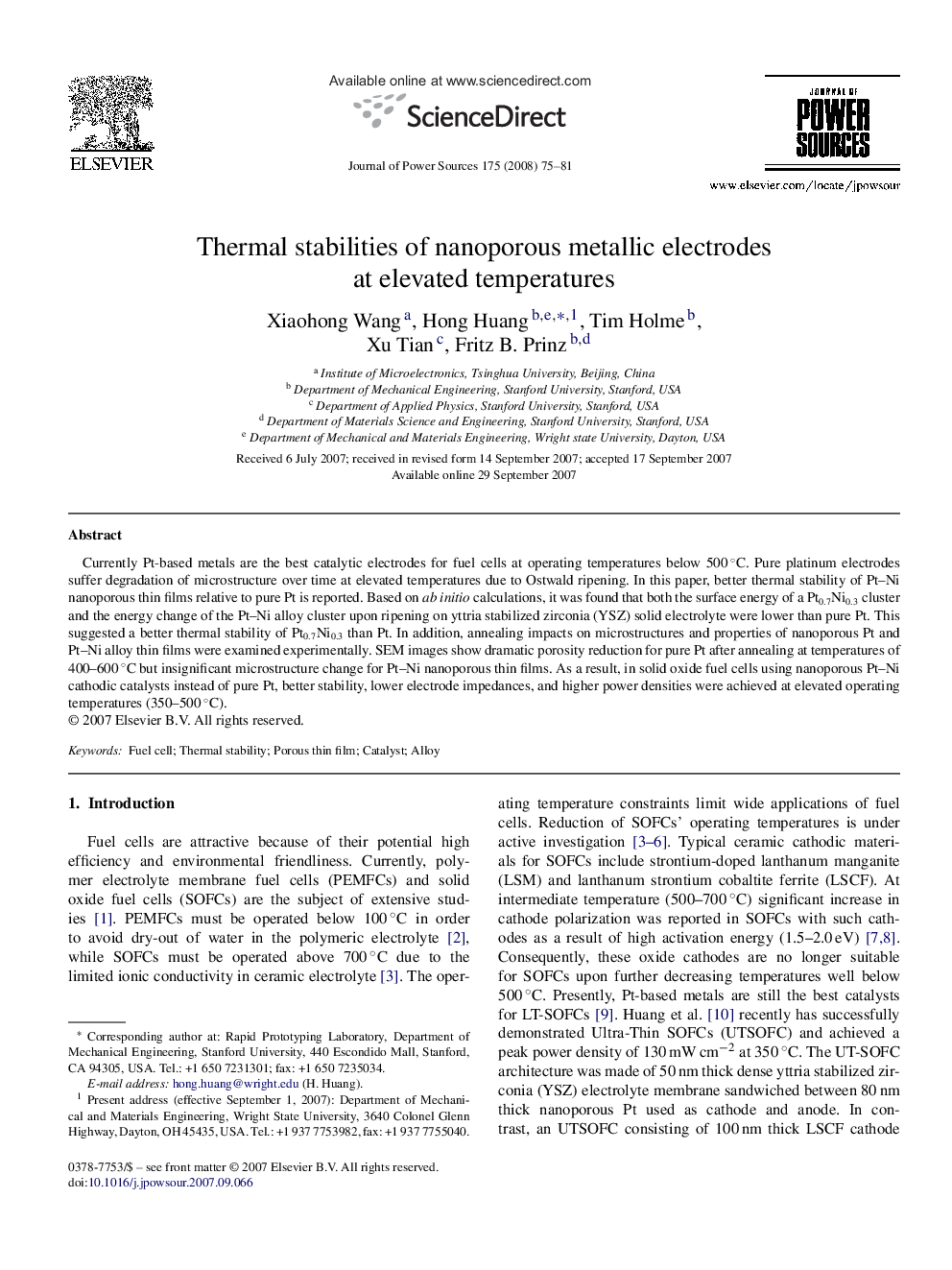| Article ID | Journal | Published Year | Pages | File Type |
|---|---|---|---|---|
| 1294753 | Journal of Power Sources | 2008 | 7 Pages |
Currently Pt-based metals are the best catalytic electrodes for fuel cells at operating temperatures below 500 °C. Pure platinum electrodes suffer degradation of microstructure over time at elevated temperatures due to Ostwald ripening. In this paper, better thermal stability of Pt–Ni nanoporous thin films relative to pure Pt is reported. Based on ab initio calculations, it was found that both the surface energy of a Pt0.7Ni0.3 cluster and the energy change of the Pt–Ni alloy cluster upon ripening on yttria stabilized zirconia (YSZ) solid electrolyte were lower than pure Pt. This suggested a better thermal stability of Pt0.7Ni0.3 than Pt. In addition, annealing impacts on microstructures and properties of nanoporous Pt and Pt–Ni alloy thin films were examined experimentally. SEM images show dramatic porosity reduction for pure Pt after annealing at temperatures of 400–600 °C but insignificant microstructure change for Pt–Ni nanoporous thin films. As a result, in solid oxide fuel cells using nanoporous Pt–Ni cathodic catalysts instead of pure Pt, better stability, lower electrode impedances, and higher power densities were achieved at elevated operating temperatures (350–500 °C).
